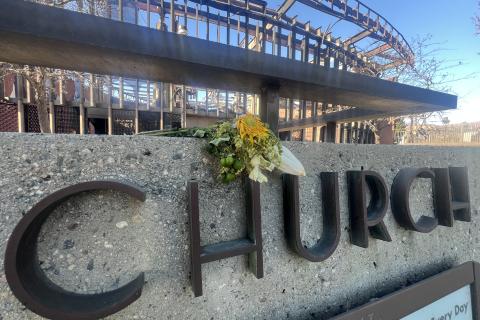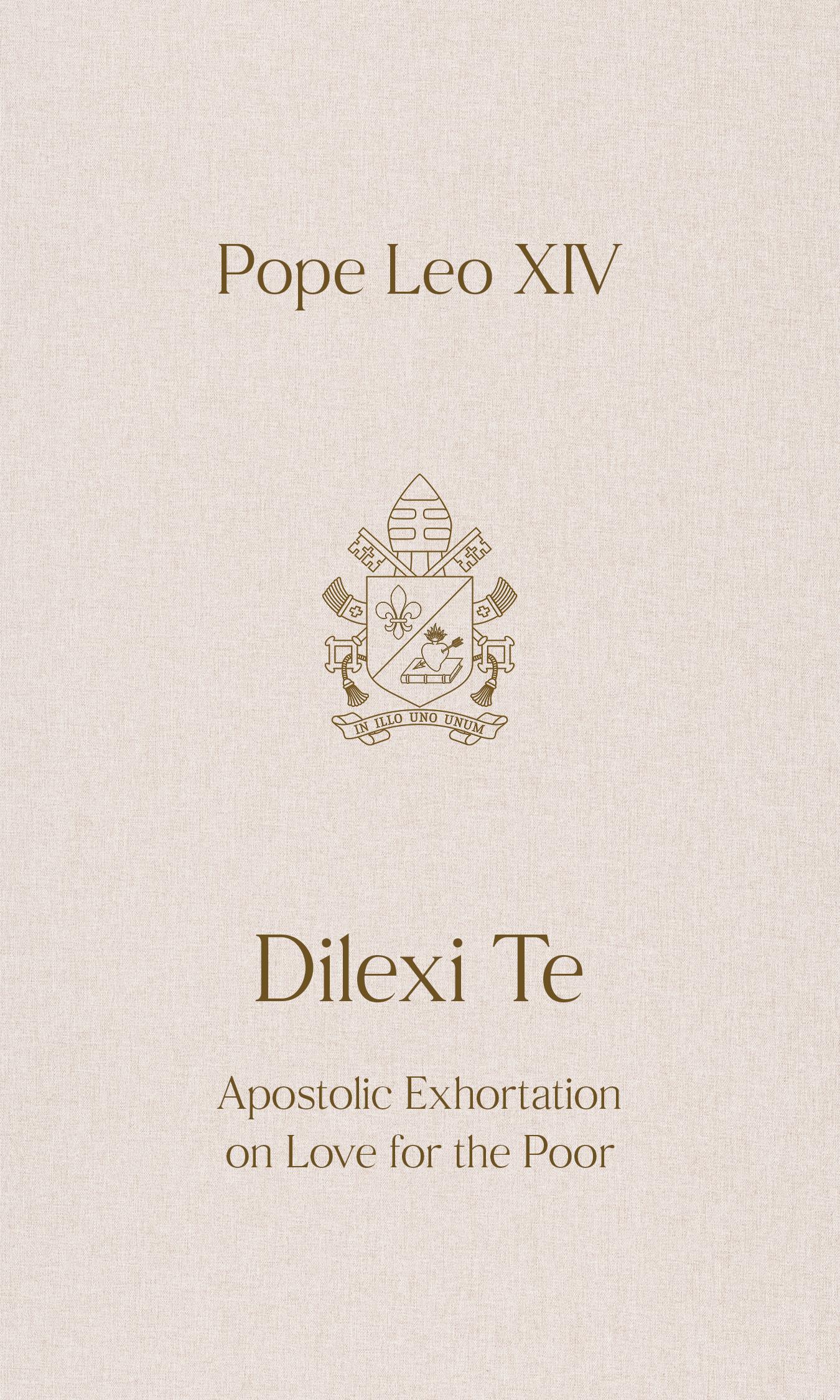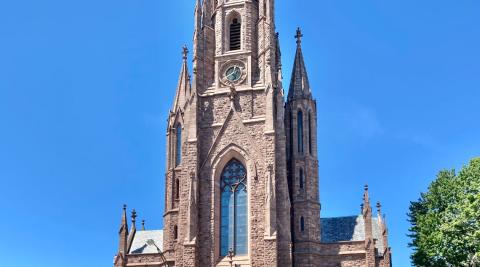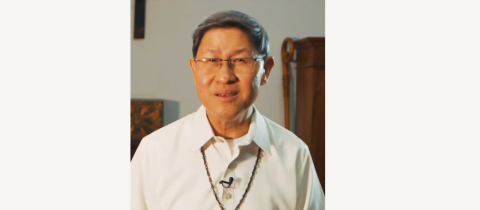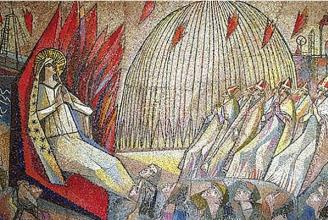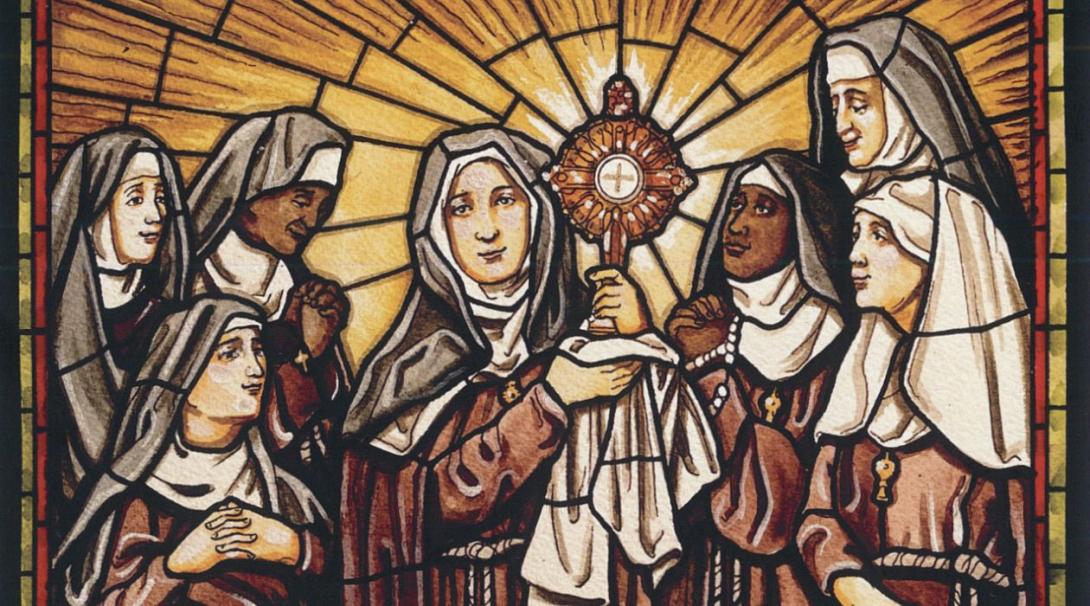
Photo by https://poorclares.org/
“I have a friend coming next week who’s a school bus driver. We met during an accident—his bus hit my car. He comes a couple times a year and we visit and we pray…and it’s so renewing for me and for him.” This story was shared by Sister Carolyn. That’s the spirit of the Poor Clare women I’ve met: hospitable, forgiving, forging a way forward, welcoming people in and always ready to talk about prayer.
I love spending time with Poor Clare women in their monasteries. I picked up a camcorder so I could capture stories of women religious, starting in 2016. This was prompted by a realization I had after an ice cream run with five Franciscan sisters in my inherited Buick—that Franciscan women religious are absolutely hilarious and the world needs to hear their stories!
This adventure has taken me deep into the world of documentary film. I’ve worked for film festivals, for a documentary fellowship organization, and I’ve helped a lot of filmmakers become unstuck. I’ve completed seven short documentaries myself, including four about Poor Clare monasteries in Ohio, South Carolina, Montana, and New Jersey. All of these are on YouTube and available to watch for free.
When you spend time with the sisters, you realize they are in fact very connected to the outside world, more so than most people who are actually out here.
When people imagine a monastery, their mind may go to images from fiction films, of places shrouded in mystery and unhappiness with ivy growing up the outside walls and a deafening silence weighing heavily on everyone. People assume that they are out of touch and disconnected. But when you spend time with the sisters, you realize that they are in fact very connected to the outside world, more so than most people who are actually out here.
Daily they receive a high volume of emails and letters and calls with requests for prayer. People visit, participate in spiritual direction, attend mass, and spend a few days at a time on retreat. There’s even a separate retreat house on the monastery property in Traveler’s Rest, South Carolina.
Some of us today ask AI to listen and give us advice. Here’s a suggestion: write an email to a monastery of women, instead, next time.
One problem with some Hollywood movies depicting nuns is the misogyny they display. The sisters are often depicted as being ignorant, violent, or repressed. In fact, we’re talking about women who have time to read, to think, to meditate, to pray. It is an awesome life and as Sister Frances says in A Quiet Joy: New Jersey’s Monastery of St. Clare (26 min., March 2020), if more women really understood what the life was like, they’d be beating down the doors to get in!
I remember one sister who carefully writes the contents of meals on tupperware lids. These are foods prepared and pureed for Sister Natalie, a community member who is dying. The other sisters visit her room to talk, bring her coffee, play the music she loves, and make sure she’s comfortable. These scenes—which I’ve filmed—are ones that people want to talk to me about the most. We all anticipate our dying days and wonder if we will be alone or surrounded by people who love us. These moments of sisters caring for each other have been repeated thousands of times all over the world for eight centuries, modeled by St. Clare of Assisi and her sisters themselves.
These women live, pray, and work together, and they invite us into their lives.
When I am out and about talking with people who lack a context for monastic living, I like to ask them to imagine something. Take a look at everyone in the room with us right now. We all come from different backgrounds, have different preferences, parents, upbringings, diets, circadian rhythms, and senses of humor. Now imagine that we all had breakfast tomorrow, then lunch, then dinner, and the next day too. Now, imagine we did this every day for the rest of our lives, in addition to working together all day and the next. Using their imagination like this gives people a glimpse of what it would be like to live in community in this intense way. I suppose part of my quest is to figure out how people can get along while living cooperatively for so long.
I sometimes imagine that my camera has been a passport to visit these women, but the fact is that their doors are open. They have the infrastructure to host guests and welcome us with open arms. What the camera has done is given me the mission to sit and talk. I love learning about what they were doing right before they took the leap to join. When you listen to them, you realize they all had a lot of options, including one sister from New Jersey who had plenty of men wanting to marry her.
Contrary to the image that they are incommunicado and stuck behind a wall, all of us are welcome to interact with Poor Clares. Each place has its culture and ways they show hospitality. I am grateful for the special access that they have given me.
It is true that some communities have declined my offer to live among them and film. But then I have sat down with friends of the nuns, meaning neighbors, frequent visitors and priests, to ask them what those relationships with the sisters have meant to them. The camera has allowed me to linger on the beauty of a snowdrift outside a sitting room window in Montana, to see bird photos taken by Sr. Vicky as part of her contemplative leisure activity, to glimpse a candle flickering in a chapel, or the unchoreographed choreography of four Montana sisters folding vestments and altar cloths after mass one day.
These women live, pray, and work together and they invite us into their lives.






